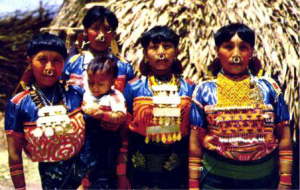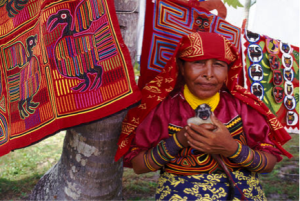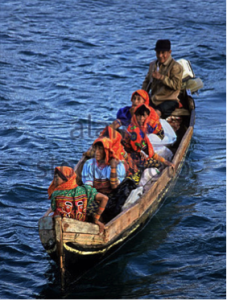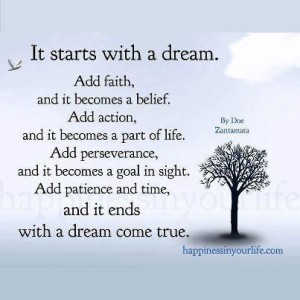 Musings
Musings  No Comments
No Comments No “S” Word!!
Many of you readers have acknowledged that “My Barrel Roll Theory of Self-Mastery” (http://bit.ly/14mdvB3) stimulated insights and inspiration. For this I am pleased as this was the reason I recounted my experience for my children. The same concepts of Focused Will (FW), Self-Confidence (SC), and Decisive Action (DA) are in play in my story below. Again as I have written these stories for my children I get to play a ‘leading role’.
No “S” Word!!
Sharks!!! The image was on everybody’s mind. No one spoke the ‘S’ word.
My wife, sister and brother in-law, Mother, and 12 year-old sister were aside me in the turbulent Caribbean – dumped from a capsized native dug-out canoe – with no land in sight.
The journey started out several hours earlier.
My family had flown from California to the Republic of Panama, where I was living and working, to spend Christmas with my wife, and me, and our three-month old baby, this generation’s first grandchild. After the Christmas holiday I wanted to treat my family to a tourist adventure to travel to some interesting Caribbean islands.
We had flown east via small plane from Panama City to Porvenir, the northern-most island of Comarca de Kuna Yala, the San Blas Islands, off the Caribbean side of the Republic. Porvenir was the only island of the 365 in the archipelago that had a small landing strip. Except for the strip caretaker this island was uninhabited. There were only 36 of the islands that were inhabited and we had intended to visit three or four to see how the indigenous Kuna people lived and buy Mola blouses and local souvenirs.
The Kuna women were famous for their Mola blouses which are handmade using a reverse appliqué technique. Usually two to seven layers of different-colored cloth are sewn together; the design is then formed by cutting away parts of each layer. The largest pattern is typically cut from the top layer, and progressively smaller patterns from each subsequent layer, thus revealing the colors beneath in successive layers. (see Notes **)
Back to the journey…
My family took a large dug-out cayuco for a 30 minute boat ride to an inhabited island. We toured the island, met the island Cacique (Chief) and bought an armload of Molas. The chief described another island that had excellent Molas and Kuna crafts that was about a 45 minute boat ride away.
A Kuna man with a smaller cayuco bargained to take us to this island.
The sky was darkening and the wind was picking-up. A light rain had started. The Kuna prodded us to hurry and board for the journey. This cayuco, with a small outboard motor on the stern, was only about 14 feet long, very narrow, and barely accommodated my family.
As we carefully boarded the unstable cayuco I noticed that the water was only about six inches below the gunnels. The Kuna hurried us aboard. After several tugs on the pull chord the motor started and we pushed away from the rickety dock.
The cayuco was already laden with a few inches of water and the Kuna boatman motioned for us to use the half coconut shells and bale. We did, barely keeping up with new water wafting over the sides. We continued to bale.
After about 20 minutes into the ride the seas and the rain were becoming more turbulent. We continued to bale. What had been almost a game became an increasing demand. We baled faster. …and then…
the motor quit… The Kuna worked feverishly to restart it. As the cayuco floated motionlessly more and more water came over the sides. Finally the motor caught and we began moving – slowly, with the weight of all the water – and now the outside sea barely two inches below the gunnels. We baled and baled.
After 10 more minutes with worsening seas the motor quit again. The Kuna desperately tried to re-start it. No deal. Water flowed into the boat. Water completely flooded the cayuco. We began to sink and then the cayuco capsized. We were all dumped into the ocean.
The outboard motor held the stern of the cayuco well beneath the water and allowed only about six feet of the bow to float above. I yelled for the Kuna to drop the motor. He refused.* We plastered ourselves against the exposed bow of the cayuco. There were no hand-holds, the boat bottom was smooth, and we had to kick to stay in contact with it.
None of us were very good swimmers – save my sister Kristi, who was on her middle-school swim team. My Mother, now a new Grandma, held tightly to a rubber flip-flop sandal and a floating styrofoam cooler.
The Kuna was no help as he was also near panic. With no land in sight I communicated in hand signals as to which way we should point the cayuco. The Kuna decided for us and we all began kicking and kicking – moving the cayuco very slowly.
Time also passed slowly. Lots of kicking – little talk – all words of forced encouragement – no one dared say the “S” word.
After about 15 minutes we spotted a small boat in the distance. The Kuna began yelling. The small six-foot cayuco with a small sail was captained by a young boy, only six to eight years old. There was no room for any other passenger. Our Kuna driver told the boy to go to the nearest island and bring help. The boy sailed off and we never saw him again.
In the distance we could see waves splashing over a raised coral reef. We kicked and kicked and kicked until we were over the reef. The reef was about 2-4 feet below the surface. I grabbed the bow-line and with the others floating along side and holding on to the overturned cayuco, I began to walk across the reef. The walk was difficult as the reef was very uneven and every step was an opportunity for a mis-step.
The reef extended for about 200 yards. When we came the outer edge we decided to rest and wait. 30 minutes seemed like and eternity when finally we saw a boat coming toward us. This cayuco was smaller that ours and could only take three of us. Grandma, Kristi, and my sister-in-law boarded the small rescue cayuco and headed for an unseen island.
In 30 more minutes the cayuco returned to gather those of us remaining.
When we approached the dock of the new island Grandma was standing, waiting, and still holding the rubber flip-flop and the styrofoam cooler. These were not about to be surrendered.
Climbing out of the cayuco I saw that my legs from knees to ankles were covered with embedded sea urchin spines. I had not noticed that I was being pierced with the spines as I walked across the reef. Only when safe did I begin to feel the pain of all the little spears. I claim no act of bravery or martyrdom. In truth during the reef-walk I did not feel them. It was another lesson that when we are intently focused on a goal or destination many pains and obstacles are irrelevant.
As I started to pull the spines out of my legs a young Kuna girl gently slapped my hand. She gestured me to not pull the spines out. She broke off one and showed me the reverse barbs and through hand-signs told me that they would not come out without making bigger wounds. The girl handed me a coconut shell, like the ones we used to bale with, and gestured to begin beating the embedded spines to pulverize them. This worked – painfully.
What was learned from this adventure?
As the trip organizer the family had looked to me to make the decisions about where and how we would go. For the fateful cayuco ride I had looked to the Kuna boatman to make decisions about the safety of his cayuco and the proposed trip. An important lesson was learned here.
- Take Responsibility – I will never allow someone else, even authorities, to make decisions for my safety or that of my family until I am thoroughly convinced that all is on order – and when my inquiries and instincts tell me ‘no’ – it will be a ‘no-go’.
- Plan Ahead – As a former Air Force pilot I would never leave the ground until I knew all the ‘emergency procedures’ for my aircraft and had determined alternative landing fields in route. I will apply the same safety rules to all adventures before I set out.
- Be Prepared – At the first sign of an unsafe situation. I will make new decisions to lessen danger.
- Stay Focused – When in an unsafe or challenging situation I will stay observant, focused, and committed to solution.
- N’Gup – Never, Never Give-Up. Quitting is not an option.
- Words – Never, Never use the “S” word, or any other word or expression that will induce fear in a situation where full attention and resourcefulness are required
Notes:
* I am certain that the outboard motor was this Kuna boatman’s most expensive and important possession. He was not about to dump it in the bottom of the ocean.
**Formerly before colonization the Kuna women decorated themselves with body-painting of geometric designs and sea creatures. This tradition was out-lawed by the lording colonists and the women transferred their art to blouses – Molas.



